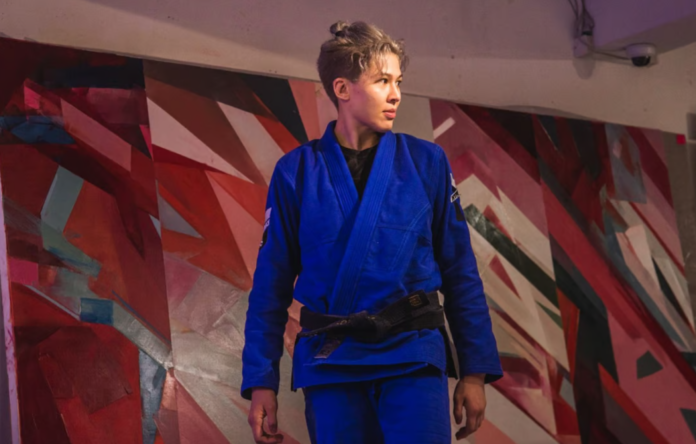
If you are looking for a martial art that can challenge you physically and mentally, improve your fitness and self-defense skills, and provide you with a fun and supportive community, then you should consider learning Brazilian Jiu-Jitsu. BJJ is a “gentle art” that uses leverage and technique to control and submit an opponent, regardless of their size or strength. In this article, we’ll discuss the basics of Jiu-Jitsu, ranging from main positions, transitions, submissions, and defenses to some tips on training and resources that will help you start your Jiu-Jitsu journey today.
What Is Jiu-Jitsu And Where Did It Come From?
Jiu-Jitsu (originally written “Ju-Jitsu”) is a martial art/combat sport that originated in Japan as a form of unarmed combat for samurai warriors. The word Ju-Jitsu means “gentle art” or “gentle technique” in Japanese, as it relies on using minimal force and maximum efficiency to overcome an opponent. Originally, the art involved grappling, throwing, striking, joint locking, choking, and weapon-disarming techniques.
While the exact origins of Jiu-Jitsu are unclear, some historians think it originated in ancient India or China. It was initially a means for Buddhist monks to defend themselves against bandits and invaders. Later, the art was brought to Japan, most likely by traveling monks or traders who passed it on to various clans and schools of samurai warriors. Jiu-Jitsu then morphed into a vital skill for samurai who had to face enemies without their swords or armor on the battlefield.
In the early 20th century, Jiu-Jitsu was introduced to Brazil by a traveling Japanese judoka named Mitsuyo Maeda. The Jigor Kano student traveled around the world to learn various grappling styles in order to improve his Judo.
Maeda settled in Brazil in 1914, where he befriended a local businessman named Gastao Gracie. Gracie’s son Carlos became one of Maeda’s students and learned the secrets of Jiu-Jitsu. Carlos then taught his brothers, especially Helio, who was smaller and weaker than his siblings. Helio adapted Jiu-Jitsu to suit his physical limitations, focusing more on ground fighting and leverage rather than strength and speed.
Helio and his brothers then challenged fighters from other martial arts to prove the effectiveness of their style. They beat everyone up, gaining notoriety in the process and naming their skillset as Gracie Jiu-Jitsu or Brazilian Jiu-Jitsu.
During the 1990s, BJJ gained worldwide recognition when Helio’s son Royce Gracie competed in the first Ultimate Fighting Championship, giving birth to mixed martial arts in the process. The first UFC pitted fighters from different disciplines against each other. Royce Gracie dominated his opponents purely with his Jiu-Jitsu skills, submitting every one of them with ease, despite being smaller and lighter than most.
Royce’s victories inspired many people to learn BJJ as a way of self-defense or sport.
Basics of Jiu-Jitsu Positions (And Transitions)
One of the first things you need to learn when you start practicing Jiu-Jitsu is how to position yourself in relation to your opponent. There are three essential positions that make up the basics of Jiu-Jitsu, relative to how you are facing your opponent and where you are in regard to the ground: standing, top ground, and bottom ground position.
The Difference Between Standing, Top And Bottom Positions
Standing position is when both you and your opponent are on your feet, facing each other. This is where most fights/grappling matches start, but not where they end. In the standing position, the goal is to engage with grips in order to achieve takedowns, throws, or clinches that allow you to take the fight to the ground on your terms.
The top position is when you are on top of your opponent on the ground, either in their guard (their legs are in between the two of you) or past their guard (in positions called side control, mount, or back control). This is where you have more control and leverage over your opponent, as you can use your weight and gravity to pin them down with pressure and apply submission holds.
The bottom position on the ground is when you are on the bottom with your opponent in your guard (your legs in between the two of you in some way). From the bottom, you have less control in t terms of pressure, but different angles in terms of leverage which you can use to get on top (sweep). You can also set up submission holds directly from your guard on the bottom.
Advantages Of Basic BJJ Positions
There are many positions in Jiu-Jitsu, but they all boil down to variations of several basics of Jiu-Jitsu :
- Guard: This is a bottom position where your legs are wrapped around your opponent’s waist or hips, for the most common variation – closed guard. This is one of the most versatile positions in Jiu-Jitsu, as you can use your legs to control your opponent’s posture, balance, and movement. You can also attack with various submissions, such as armlocks, and chokes. The guard is considered a neutral position, as both you and your opponent have offensive and defensive options.
- Side control: A top position where you are on top of your opponent with your chest on their chest while positioned sideways (your bodies are like the letter “T”). You can use your arms to control your head and arm. You can use side control to transition to other positions, such as mount, or back control and direct submission attacks are also available (armlocks, leg locks, and choke holds).
- Mount: One of the two most dominant top positions. You are on top of your opponent, straddling them with both of your knees on either side of their torso. You can use your arms to control your opponent’s head and arms or place both your arms under their armpits. The full mount is one of the most dominant positions in Jiu-Jitsu, as you can use your weight and gravity to pin your opponent down and attack with submissions at will.
- Back control: Considered a top position and the second of the two most dominant ones in BJJ. You are behind the opponent with both of your legs hooked around their waist or hips. Your arms control their head and shoulders, via a strategic and precise placement (looks like a seatbelt in a car). From back control, you can use leverage and superior angles to choke your opponent out or attack with armlocks.
Transitioning From One Position To Another
Knowing how and when to transition from one advantageous position to another smoothly and efficiently is a crucial grappling skill. Transitioning involves using movement, timing, leverage, and technique to change your position relative to your opponent’s position. There are two types of transitions: passing and sweeping.
Passing is when you are on top of your opponent in their guard or half-guard (when they have one of your legs trapped between theirs) and you move past their legs to a more dominant position, such as side control, mount, or back control.
Sweeping is when you are on the bottom of your opponent in guard or half-guard and you use your legs, hips, arms, and leverage to flip them over and end up on top of them in a more dominant position.
To transition effectively, you need to follow the principles of the basics of Jiu-Jitsu:
Control the distance: Depending on whether you want to pass or sweep, you need to either close the distance or create distance between you and your opponent.
For example, if you want to do a guard pass, you need to close the distance by breaking their grips, controlling their legs, and lowering your base.
If you want to sweep them from guard, you need to create space by breaking their posture, pushing them away with your legs or arms, and moving your hips.
Dominate the angles: Depending on whether you want to pass or sweep, you need to either maintain or change the angle between you and your opponent. Angles allow the use of leverage and are funnels that help you create traps for your opponent.
Manage space: The space between you and your opponent defines the success you’ll have with any transition in BJJ. When you are on offense, you want to make sure there’s as little space between yourself and your opponent as possible. Obviously, when you are on the defense, you want the opposite- create space between you and your opponent.
Basics Of Jiu-Jitsu Submissions And Defenses
Another essential skill in Jiu-Jitsu is knowing how to submit people and defend yourself from submissions. Submissions are BJJ techniques that force your opponent to tap out or give up due to pain or fear of injury. There are two main categories of submissions in Brazilian Jiu-Jitsu: joint locks and chokes.
The Two Types of Submissions: Joint Locks And Chokes
Joint locks are submissions that target your opponent’s joints, such as elbows, shoulders, wrists, knees, ankles, hips, and spine. Joint locks work by applying pressure and/or torque on the joint until it exceeds its limit of motion and causes pain or damage. Some of the most basic common joint locks in Jiu-Jitsu are: armbar, kimura, Americana, omoplata, straight ankle lock, kneebar, heel hook, etc.
Chokes are submission holds that target your opponent’s neck or airway. Chokes work by cutting off the blood flow or oxygen supply to the brain and causing unconsciousness or suffocation. The most common techniques from this category are the rear naked choke, triangle choke, guillotine choke, cross-collar choke, etc.
8 Basics Brazilian Jiu-Jitsu Submissions And How To Use Them
Take a look at a short summary of some of the submissions that are considered basics of Jiu-Jitsu and how you can use them against a resisting opponent.
Armbar: This is a joint lock that targets your opponent’s elbow by extending their arm (straight arm submission) and applying pressure on the joint with your hips or legs. You can do an armbar from various positions, such as guard, mount, side control, etc.
Kimura: A joint lock that targets your opponent’s shoulder by bending their arm behind their back (bent arm submission) and applying torque on the joint with your arms. You can set up a kimura from many different top and bottom positions, such as guard(s), half-guard, side control, etc.
Americana: Another bent arm submission hold that also targets your opponent’s shoulder by bending their arm. This time, the bend is in the other direction (palm towards their ear). The Americana works from various top positions, such as mount, side control, top half guard, etc.
Omoplata: This arm lock targets your opponent’s shoulder by trapping their arm with your legs and applying pressure on the joint with your hips or body. The direction of the bend is the same as with a Kimura. Omoplata’s are mostly set up form different guards.
Straight ankle lock: One of the basic leg locks, an ankle lock targets your opponent’s leg by wrapping your arm around their ankle and applying pressure on the joint and Achilles tendon with your forearm. Usually, you set ankle locks up from bottom positions, but you have access to them from top positions as well.
Kneebar: The target of this leg lock is your opponent’s knee. It works just like an armbar, but this time with the pressure on the knee. Kneebars are available, and used, from both top and bottom positions.
Rear naked choke: The quintessential Jiu-Jitsu submission, the RNC work by wrapping an arm around the opponent’s neck, reinforcing it with the other arm, and applying pressure on both sides of their carotid arteries with your biceps and forearm. The choke works from back control and certain variations of the position.
Triangle choke: A choke that uses the opponent’s shoulder on one side, and your hamstring on the other to cause the same effect as a rear naked choke. Setting it up involves using your legs to trap your head and one arm and then applying pressure on both sides of their carotid arteries by squeezing your thighs. One of the most versatile submissions in Jiu-Jitsu, the triangle is available from virtually everywhere.
Strategies For Defending and Escaping in Jiu-Jitsu
Defense is when you are preventing an opponent from succeeding in securing a submission hold on you (joint lock or choke) or transitioning to a superior position in regard to their starting one.
Escapes in BJJ refer to getting out of positions like the mount, back control, side control, and guard. When it comes to submission holds there’s no way to escape unless you defend first, which is something most people have a hard time making distinction of.
The basics of Jiu-Jitsu, when it comes to defending joint locks and/or chokes, include the following:
Prevent the position early: The best defense is prevention. Avoid getting into bad spots where your opponent can isolate and attack your limbs or neck. You also need to prevent them from securing their grips, hooks, or angles that can set up their submissions.
Protect the alignment: To escape a joint lock or a choke, you need to restore your alignment by moving your limb or neck in a way that relieves the pain or pressure. It is also important to think about aligning your own body in a way that minimizes the leverage and force on a specific target area.
Create space: To free yourself from a submission or tight pinning position, you need to create space between you and your opponent that will allow you to relieve the pressure and get out. Concepts like frames, wedges, movement, and leverage help with this goal.
Best Practices For Training BJJ
To improve your Jiu-Jitsu skills, you need to train regularly and effectively. Training involves both learning new techniques and drilling them until they become second nature, before testing them out in live sparring with different partners:
- Train with a qualified instructor: A good instructor will teach you Jiu-Jitsu in a planned and progressive manner while correcting your mistakes. They will also be happy to answer all your questions. Be sure to pick a reputable instructor though, as not every “expert” is exactly as they present themselves to be.
- Train with a variety of partners: Training partners are irreplaceable in helping you practice and improve your techniques. They should challenge you and push you to your limits, as well as provide constructive feedback.
- Have a positive attitude: A positive attitude can help you enjoy your training, overcome difficulties, learn from failures, and grow as a martial artist. respectful, humble, and supportive of yourself and others.
Recommended Resources For Learning and Improving Your Jiu-Jitsu Skills
Besides training on the mats, there are other ways to learn and improve your BJJ skills. You can use various resources to supplement your training and expand your knowledge. Some of the best resources for learning Jiu-Jitsu fast are:
Books: Books can provide you with detailed explanations, illustrations, and insights on Jiu-Jitsu techniques, concepts, strategies, history, culture, etc.
DVDs: Videos can provide you with visual demonstrations, explanations, and tips on Jiu-Jitsu techniques, concepts, strategies, and drills, by all of the world’s leading coaches and instructors.
Podcasts: Podcasts are usually audio/video interviews that cover the BJJ lifestyle through discussions, stories, and insights on various topics, such as Brazilian Jiu-Jitsu techniques, concepts, strategies, history, culture, mindset, etc.
The BJJ World blog: We aim to provide you with high-quality written articles, reviews, opinions, news, and advice on all kinds of Jiu-Jitsu topics.
Attitude, Mindset, And Training Goals
To succeed in Jiu-Jitsu, you need more than just physical skills. Mental skills are a big part of the basics of Jiu-Jitsu as they can help you overcome challenges and persevere in an environment that is very challenging.
Have fun: Jiu-Jitsu can bring you joy and satisfaction. Enjoy your training and have fun with your partners. Don’t take yourself too seriously or get frustrated by setbacks, and remember that BJJ is a journey that never ends.
Be respectful: Jiu-Jitsu is all about respect for yourself and others, from your instructor, your partners, your opponents, to the art itself.
Be humble: Acknowledge your strengths and weaknesses, your successes and failures, your knowledge and ignorance. Stay open to feedback and criticism, and willing to learn from anyone.
Ask questions: in Jiu-Jitsu you should always seek to learn new things, explore new possibilities, and experiment with new ideas. Don’t be afraid to ask questions constantly, from both your coaches and senior training partners.
Set goals: Having clear and realistic goals for your training and performance, such as learning a new technique, improving a skill, winning a JIu-Jitsu match, developing your BJJ game and/or getting a promotion, is the best way to progress through the sport quickly.
FAQs On Starting Brazilian Jiu-Jitsu Training
What are the basic concepts of Jiu-Jitsu?
Some of the concepts that the basics of Jiu-Jitsu are based upon are leverage, technique, strategy, control, submission, defense, transition, and adaptation. These concepts are the building blocks behind all major principles and methods of Jiu-Jitsu and will help you understand what you are doing as opposed to mindlessly repeating things.
Can I learn Jiu-Jitsu by myself?
You can learn some aspects of Jiu-Jitsu by yourself, such as the history, theory, terminology, and rules of the art. However, you cannot learn Jiu-Jitsu fully by yourself, as you need a qualified instructor to teach you the details, correct your mistakes, and answer your questions. You also need a partner to practice and spar with.
How many days a week should a beginner do Jiu-Jitsu?
There is no one-size-fits-all answer to this question. It depends heavily on your goals, availability, fitness level, and personal preference. A general recommendation is to train at least twice a week as a beginner in order to to make consistent progress and retain what you learn.
What are BJJ basics?
BJJ basics are the fundamental techniques, concepts, and strategies that form the foundation of Jiu-Jitsu. They include the basic positions, submissions, and defenses. BJJ basics are essential skills for any grappler to master, as they provide the foundation for more advanced skills and variations.
What moves can you do in BJJ?
There are hundreds of moves that you can do in BJJ, ranging from simple to complex, from basic to advanced.
What is the best BJJ move for a street fight?
There is no single best BJJ move for street fights, as different situations may require different responses. In general, try to avoid going to the ground unless necessary, use strikes and takedowns to create distance and control, and submissions to end the fight quickly and safely,
Some of the most effective BJJ submissions for a street fight are the rear naked choke, guillotine choke, armbar, kimura, triangle choke, etc.
What is Jiu-Jitsu weakness?
Jiu-Jitsu has some distinct weaknesses depending on its use. For example, it can be ineffective against multiple attackers or weapons. Also in terms of self-defense, it can be difficult to apply in confined spaces or on uneven surfaces. It is also often limited by rulesets in terms of sports performances which take away many options.
How to memorize Jiu-Jitsu moves?
Memorizing Jiu-Jitsu moves can be challenging, as there are many techniques to learn and remember. Some tips to help you memorize Jiu-Jitsu moves are to try and to understand the concepts and principles behind each move, drill the moves repeatedly until they become automatic, review the moves regularly and test yourself on them, use mnemonics or associations to recall the names and details of the moves, and visualize the moves in your mind or watch videos.
What do you do in beginner Jiu-Jitsu?
In beginner Jiu-Jitsu, you do a variety of activities that help you learn and improve your skills.
Usually you start with warm-up exercises, followed by technique demonstrations, then technique drills, and ultimately sparring sessions that allow you to test your skills against a resisting opponent.
What is the first move in BJJ?
There is no definitive answer to this question, as different instructors may teach different moves as the first move in BJJ.
What are the most important BJJ positions?
The most important BJJ positions are the ones that give you complete control and advantage over your opponent. These positions are usually classified into two categories as part of the basics of Jiu-Jitsu: dominant top positions and guard positions.
Dominant positions are the ones where you are on top of your opponent or behind them, such as mount, side control, back control, etc.
Guard positions are the ones where you are on the bottom of your opponent, but you use your legs to control them and prevent them from passing, such as closed guard, open guard, half guard, etc.
What are the different arm locks in BJJ?
Arm locks are submissions that target your opponent’s elbow or shoulder joints by applying pressure or torque on them. There are many different arm locks in BJJ, but some of the most common ones are armbar, kimura, Americana, omoplata, bicep slicer, Tarikoplata, wrist lock, inverted armbar, etc.
Is training BJJ 3 times a week enough?
Training BJJ 3 times a week can be enough for some people, depending on their goals, availability, fitness level, and personal preference. Training 3 times a week can help you make consistent progress and retain what you learn.
However, if you want to improve faster or compete at a higher level, you may need to train more often or supplement your training with other activities, such as strength and conditioning, drilling, watching videos, etc.
Conclusion
Jiu-Jitsu is a martial art that originated in Japan and evolved in Brazil. It is a grappling-based art that focuses on using leverage, technique, and strategy to control and submit an opponent. Jiu-Jitsu can be practiced for self-defense, sport, or recreation. It can also provide physical, mental, and social benefits, such as fitness, confidence, discipline, friendship, etc.
To learn BJJ, you need to understand the basics of Jiu-Jitsu in terms of positions, transitions, submissions, and defenses. You also need to train regularly and effectively, using various resources and tools to supplement your learning. You also need to develop a positive attitude, a growth mindset, and clear goals for your training and performance.


![Darce Choke Encyclopedia – Origins, Mechanics and Variations [2025] BJJ, choke, Brabo, BJJ Darce Choke, D'arce Choke, Darce BJJ Choke](https://bjj-world.com/wp-content/uploads/2017/11/JungPoirierLeeYahoo-218x150.jpg)







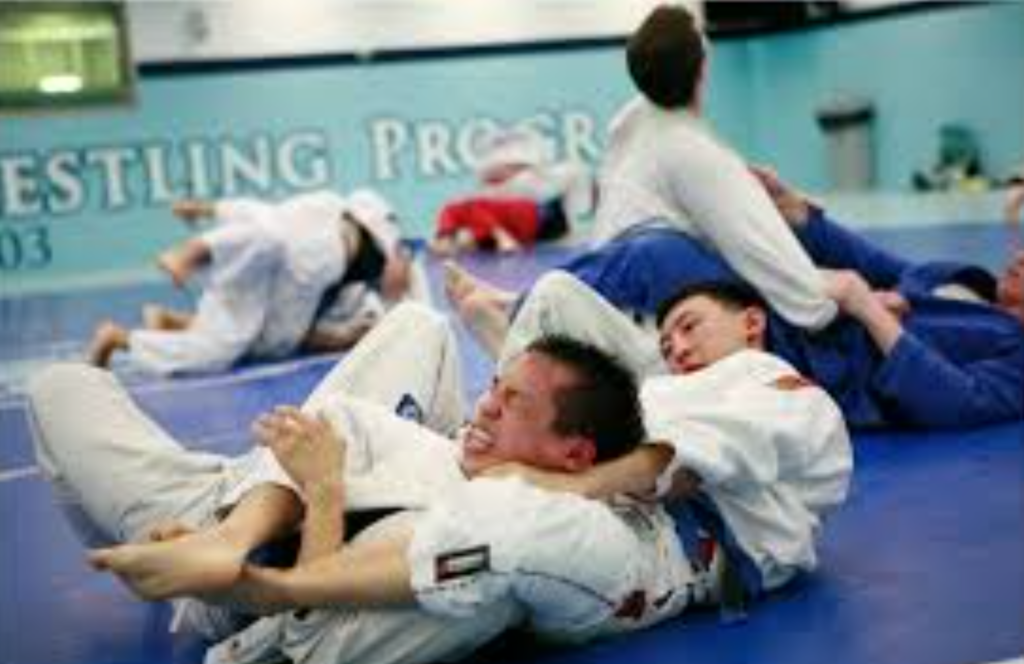
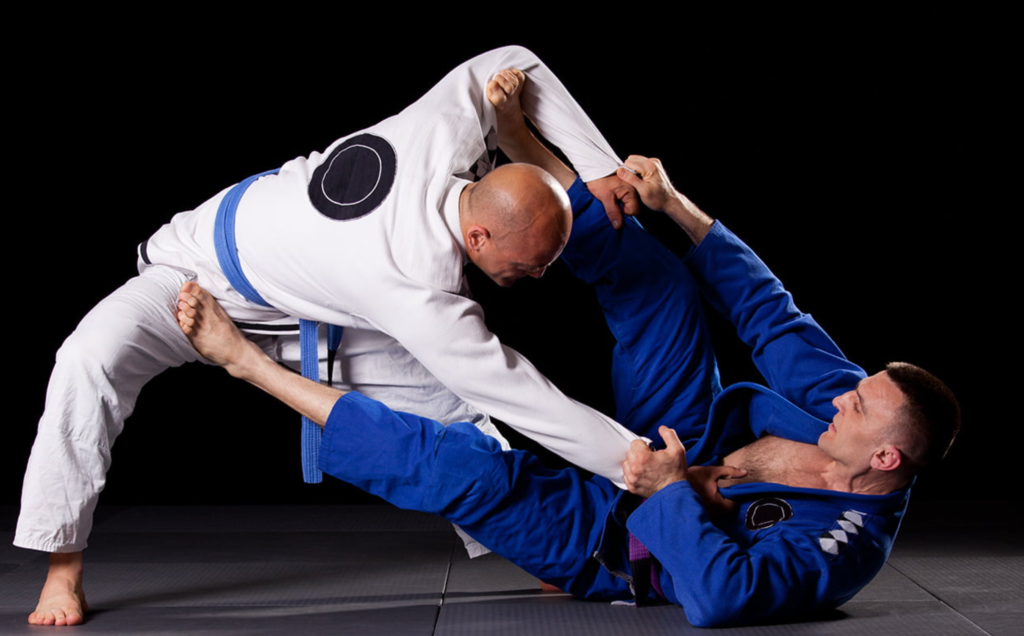
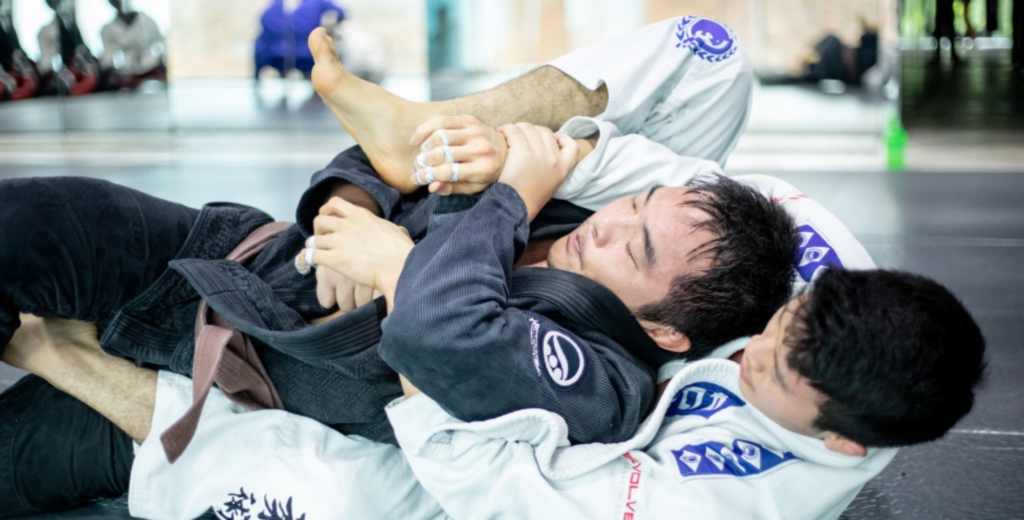
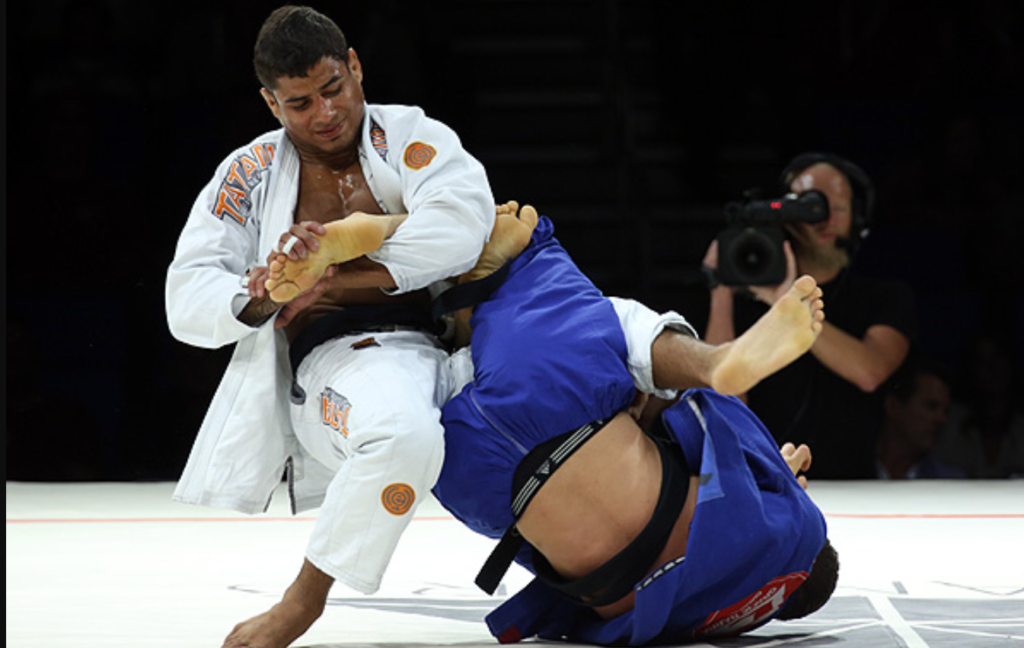
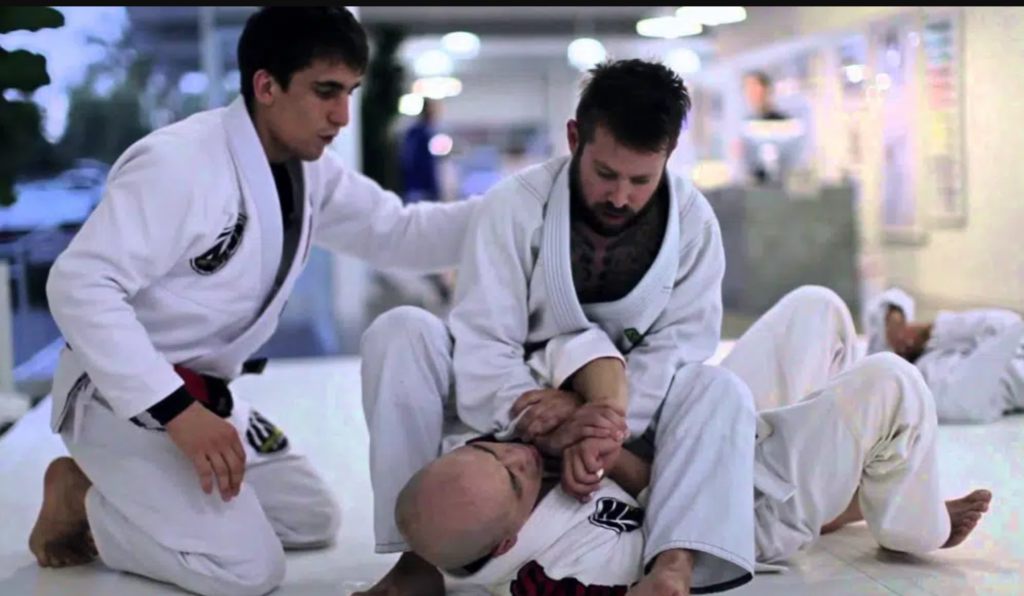
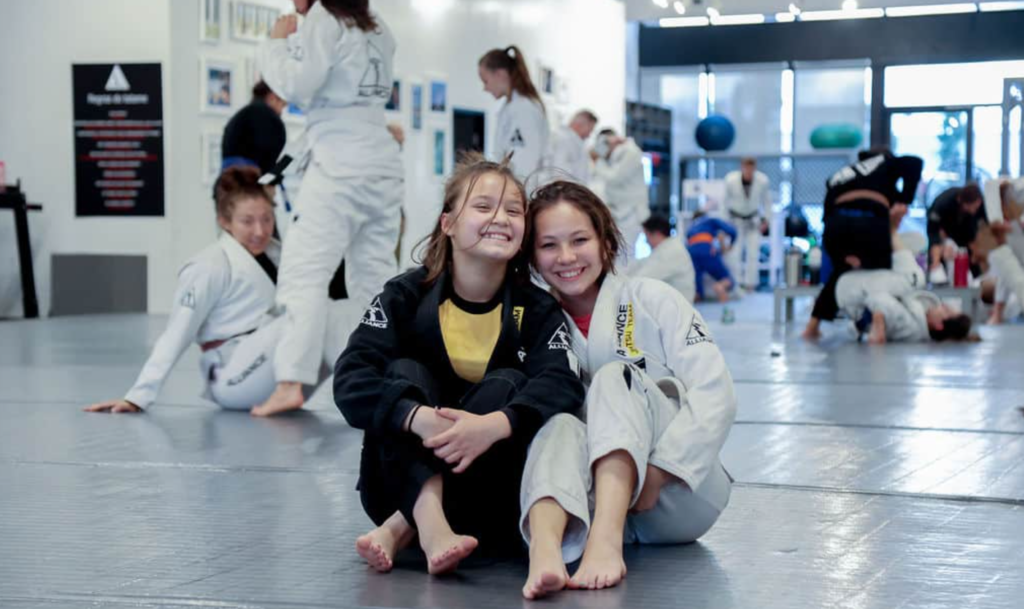


![No-Gi Grapplers Guide To Front Headlock Joel Bane DVD Review [2025] No-Gi Grapplers Guide To Front Headlock Joel Bane DVD Review](https://bjj-world.com/wp-content/uploads/2025/03/no-gi-front-headlock-joel-bane-dvd-review-218x150.png)

![Get Off My Legs Gringo Craig Jones DVD Review [2025] Get Off My Legs Gringo Craig Jones DVD Review](https://bjj-world.com/wp-content/uploads/2025/03/get-off-my-legs-gringo-craig-jones-dvd-review-218x150.png)

![Leg Lock Entries Helena Crevar DVD Review [2025] Leg Lock Entries Helena Crevar DVD Review](https://bjj-world.com/wp-content/uploads/2025/03/leg-lock-entries-helena-crevar-dvd-review-218x150.png)
![Special K Guard Neil Melanson DVD Review [2025] Special K Guard Neil Melanson DVD Review](https://bjj-world.com/wp-content/uploads/2025/03/special-k-guard-neil-melanson-dvd-review-218x150.png)
![Finish on the Back Ethan Crelinsten DVD Review [2024] Finish on the Back Ethan Crelinsten DVD Review](https://bjj-world.com/wp-content/uploads/2024/10/finish-on-the-back-ethan-crelinsten-dvd-review-324x235.png)

![Baby Shark Guard System Diogo Reis DVD Review [2025] Baby Shark Guard System Diogo Reis DVD Review](https://bjj-world.com/wp-content/uploads/2025/02/baby-shark-guard-system-diogo-reis-dvd-review-100x70.png)

![Collar Sleeve Guard Mikey Musumeci DVD Review [2024] Collar Sleeve Guard Mikey Musumeci DVD Review](https://bjj-world.com/wp-content/uploads/2024/12/collar-sleeve-guard-mikey-musumeci-dvd-review-100x70.png)
![Higher Tripod Passing Craig Jones DVD Review [2025] Higher Tripod Passing Craig Jones DVD Review](https://bjj-world.com/wp-content/uploads/2025/02/higher-tripod-passing-craig-jones-dvd-review-100x70.png)
![Shin to Shin Eoghan O’Flanagan DVD Review [2025] Shin to Shin Eoghan O'Flanagan DVD Review](https://bjj-world.com/wp-content/uploads/2024/12/shin-to-shin-eoghan-oflanagan-dvd-review-100x70.png)
![Top Half Guard Neil Melanson DVD Review [2025] Top Half Guard Neil Melanson DVD Review](https://bjj-world.com/wp-content/uploads/2025/02/top-half-guard-neil-melanson-dvd-review-100x70.png)

![Full Guard Formula James Booth DVD Review [2025] Full Guard Formula James Booth DVD Review](https://bjj-world.com/wp-content/uploads/2025/02/full-guard-formula-james-booth-dvd-review-100x70.png)
![Eoghan O’Flanagan Bundle Down Right Sloppy Jiu-Jitsu Review [2024] Eoghan O'Flanagan Bundle Down Right Sloppy Jiu-Jitsu Review 2024](https://bjj-world.com/wp-content/uploads/2024/09/down-right-sloppy-jiu-jitsu-eoghan-oflanagan-bundle-100x70.png)
![Underhooks With Uncle Jeff Glover DVD Review [2025] Underhooks With Uncle Jeff Glover DVD Review](https://bjj-world.com/wp-content/uploads/2025/02/underhooks-with-uncle-jeff-glover-dvd-review-100x70.png)




![How To Knee Cut Junny Ocasio BJJ DVD Review [2025] How To Knee Cut Junny Ocasio BJJ DVD Review](https://bjj-world.com/wp-content/uploads/2025/02/how-to-knee-cut-junny-ocasio-bjj-dvd-review-100x70.png)

![Closed Guard Reintroduced Adam Wardzinski DVD Review [2025] Closed Guard Reintroduced Adam Wardzinski DVD Review](https://bjj-world.com/wp-content/uploads/2025/01/closed-guard-reintroduced-adam-wardzinski-dvd-review-100x70.png)
![Breaking Their Guard Mikey Musumeci DVD Review [2025] Breaking Their Guard Mikey Musumeci DVD Review](https://bjj-world.com/wp-content/uploads/2025/02/breaking-their-guard-mikey-musumeci-dvd-review-100x70.png)
![Advanced Chin Control Concepts David Petrone DVD Review [2025] Advanced Chin Control Concepts David Petrone DVD Review](https://bjj-world.com/wp-content/uploads/2025/01/chin-control-concepts-david-petrone-dvd-review-100x70.png)
![Dynamic De La Riva Guard Otavio Sousa DVD Review [2025] Dynamic De La Riva Guard Otavio Sousa DVD Review](https://bjj-world.com/wp-content/uploads/2025/02/dynamic-de-la-riva-guard-otavio-sousa-dvd-review-100x70.png)
![No-Gi Pressure Mastery JT Torres DVD Review [2024] No-Gi Pressure Mastery JT Torres DVD Review](https://bjj-world.com/wp-content/uploads/2024/10/no-gi-pressure-mastery-jt-torres-dvd-review-100x70.png)
![Daisy Fresh WHITE BELT Wrestling Curriculum DVD Review [2024] Daisy Fresh WHITE BELT Wrestling Curriculum DVD Review](https://bjj-world.com/wp-content/uploads/2024/10/daisy-fresh-white-belt-wrestling-curriculum-review-100x70.png)
![Complete Front Headlock System Michael Pixley DVD Review [2024] Complete Front Headlock System Michael Pixley DVD Review](https://bjj-world.com/wp-content/uploads/2024/10/front-headlock-system-michael-pixley-dvd-review-100x70.png)


![Feet Finder Foot Sweeps Christian Ozbek DVD Review [2024] Feet Finder Foot Sweeps Christian Ozbek DVD Review](https://bjj-world.com/wp-content/uploads/2024/09/feet-finder-foot-sweeps-christian-ozbek-dvd-review-100x70.png)
![Front Headlock and Turtle Escapes Brian Glick DVD Review [2024] Front Headlock and Turtle Escapes Brian Glick DVD Review](https://bjj-world.com/wp-content/uploads/2024/11/headlock-and-turtle-escapes-brian-glick-dvd-review-100x70.png)
![Master Scissor Sweep Ryan Scialoia DVD Review [2025] Master Scissor Sweep Ryan Scialoia DVD Review](https://bjj-world.com/wp-content/uploads/2024/12/scissor-sweep-ryan-scialoia-dvd-review-100x70.png)